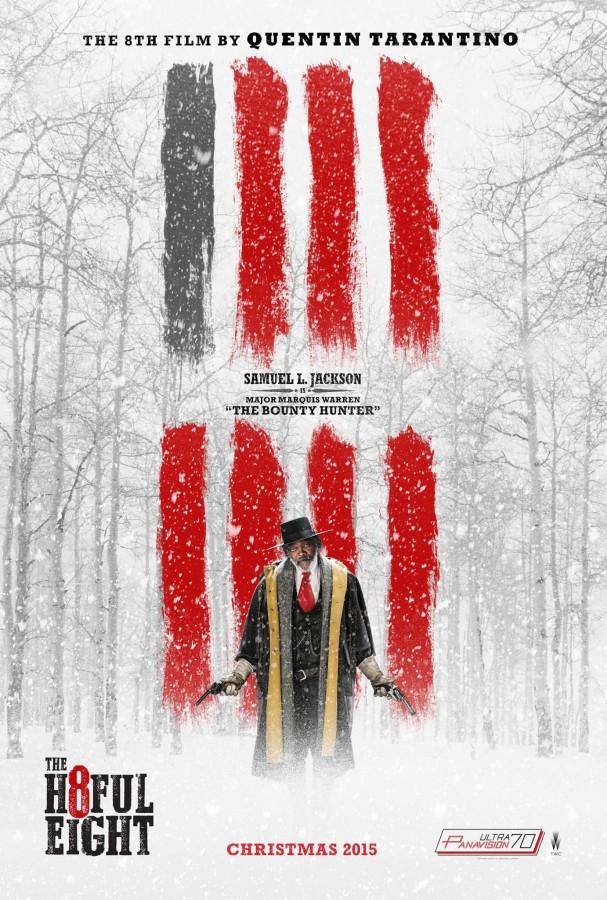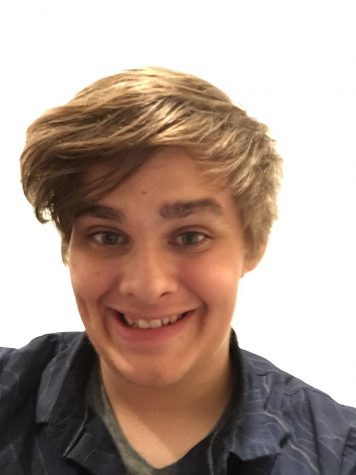The Hateful Eight Review
February 10, 2016
Quick Facts:
Written and Directed by Quentin Tarantino
Starring Samuel L. Jackson, Kurt Russell, Jennifer Jason Leigh, Tim Roth, and Michael Madsen
Rated R for strong bloody violence, a scene of violent sexual content, language and some graphic nudity
Music scored by Ennio Morricone
3 hr 7 Min (Roadshow Version) / 2 hr 47 min (General Release)
Released Dec 25, 2015 (Roadshow) and Dec 31, 2015 (General Release)
In a general scope, Quentin Tarantino is not known for orchestrating the grandiose Ben-Hur or 2001 type fare. His style is more akin to the cheap, gritty Grindhouse films of the 70’s, which makes his latest film The Hateful Eight kind of a curveball. Your trusty reporter got the wonderful opportunity to see this film on Christmas eve; on the first night of the Roadshow premiere in glorious Ultra Panavision 70, a widescreen format from long ago. The first portion of the film is slowly-drawn, but gives us the chance to really get to know the characters and their upbringing. The even stranger part is the lack of violence in the beginning, which is very unusual for a Tarantino film. But once the film resumed, we were treated to some of the most gruesome and nihilistic violence of Tarantino’s career, strangely ending on a note of hope. The whole film is set in one room, which creates a great sense of claustrophobia and intensity in situations. This claustrophobic setting – featuring seven bad men and a feral woman trapped in a haberdashery in Wyoming – brings out the ugliest in each one of them and turns into pointed fingers and slurs, followed by sprays of bloody vomit and gunshots that brings forth a Whodunnit mystery. A very unique element to the Hateful Eight is it’s prominent political message – regarding sadistic men confronted by false causes. In essence; the American dream is only a lie, once the floorboards were blood spattered and covered in brain matter, and the satire of justice is complete, it looks toward that same ideal with the hope that one day, someone will be suckered by it hard enough to make it come true. It’s still very hard to believe that Quentin Tarantino, the director who brought us Resevoir Dogs and Pulp Fiction became a political filmmaker.
Even though the film has a strong comedic tone, it’s fair to say it’s Tarantino’s first drama as well. With the original score by Ennio Morricone (mind you it’s the first one he’s done for a Western in 40 years), the script could easily be translated into a stage play. Despite that comment, the story has a crisscross of opposites and suspicions cut through by some of his most lucid and sophisticated camerawork to be seen. The 70mm film is crystal clear, featuring fluid transitions of focus on the dot during its long-drawn scenes.
Coincidentally, this installation to the Tarantino library was first conceived as a sequel to Django Unchained, which is evident through it’s reworking of Western tropes. It’s nowhere of being a historical fantasy in vein of its predecessor Inglorious Basterds, though it does recreate a similar theme of misdeeds and revenge. Tarantino is always been characterized as a creator of movie-movies, but upon a closer look his Cinema references (blaxploitation films, revisionist Westerns, New Wave-era Jean-Luc Godard movies etc.) are usually very political; figuring he’s gone to imitate their sense of cool, perhaps it was inevitable that he’d develop a political conscience. The film addresses the issue of African-Americans and Law enforcement, giving Samuel L Jackson’s character lengthy speeches about how he’s seen as a “threat.” As a whole, all the Cinematic references in this film all seem to point fingers at Traditional American Values.
We are first introduced to Major Marquis Warren (Jackson), who runs into John “The Hangman” Ruth (Russell) and Daisy Domergue (Leigh) in their caravan while deserted in the snow, asking for passage. They allow him on, but soon run into another unexpected guest – Chief Mannix (Goggins), who was a Confederate opponent during the war. They seek refuge at Minnie’s Haberdashery, to run in with another group of individuals. Over the course three hours of ultraviolence and sharp dialect, the plot unravels and we start to uncover who our characters really are.


